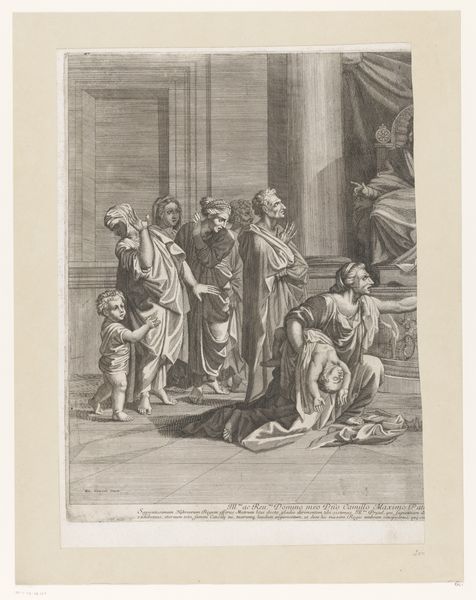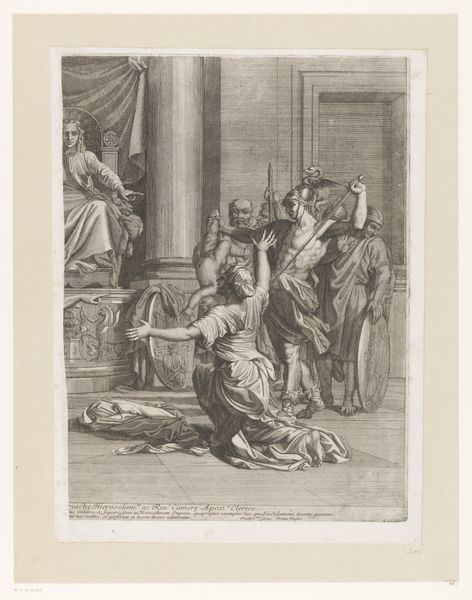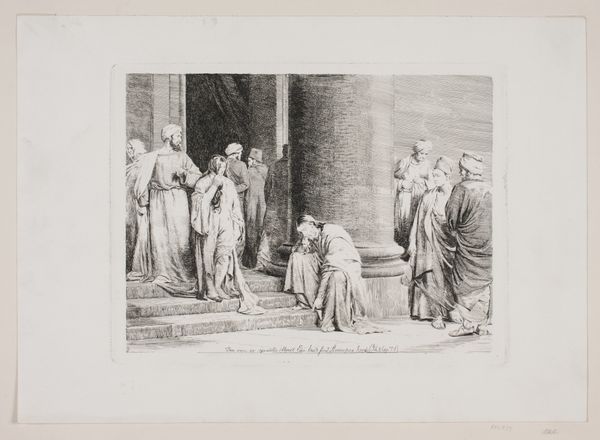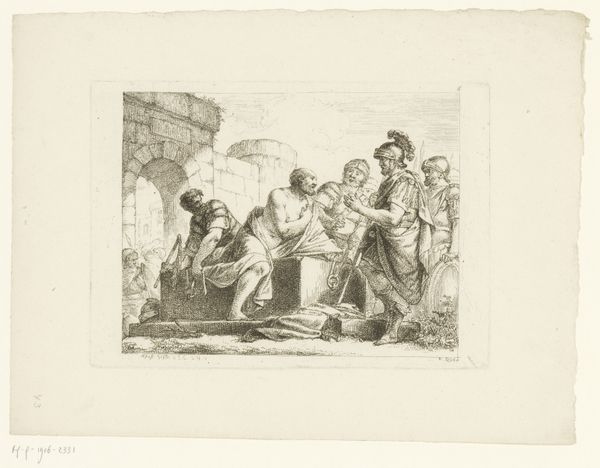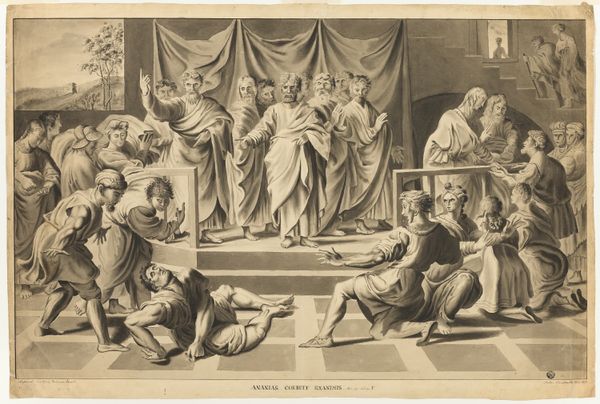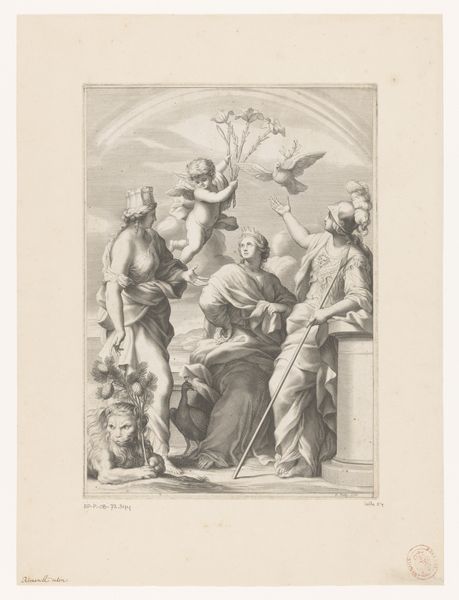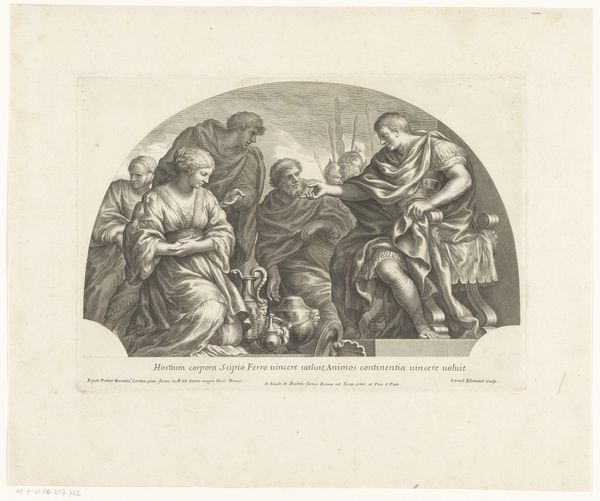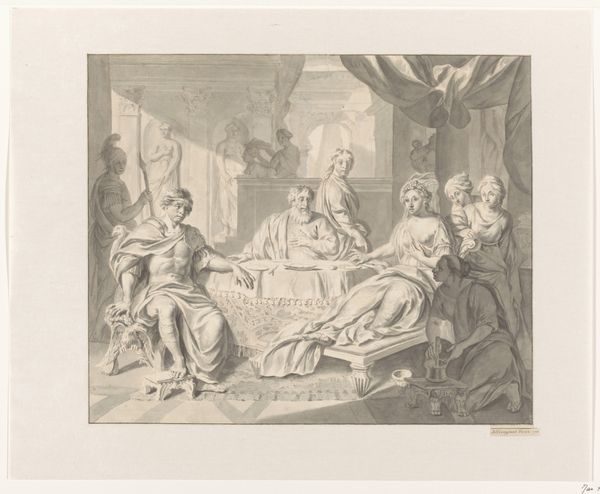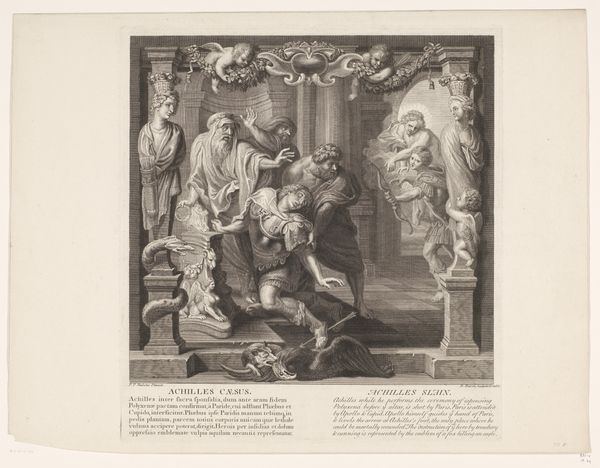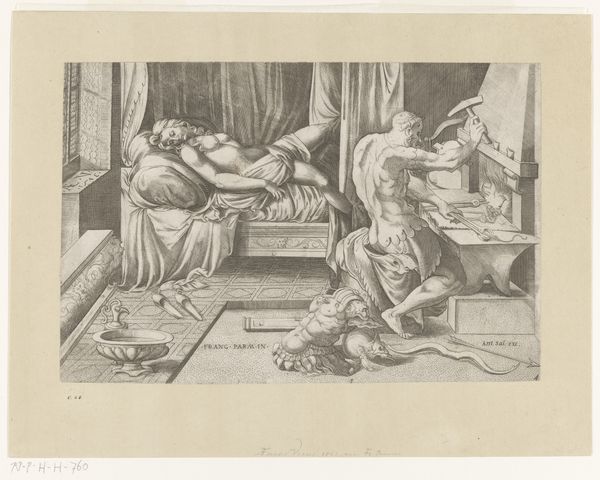
print, engraving
#
portrait
#
pencil drawn
#
neoclacissism
#
allegory
# print
#
figuration
#
pencil drawing
#
line
#
history-painting
#
engraving
Dimensions: height 388 mm, width 497 mm
Copyright: Rijks Museum: Open Domain
This print, Nemesis en Themis, was created by Julien-Léopold Boilly in the 19th century, using a technique called etching. The magic of etching lies in its indirectness. The artist doesn't directly carve into the metal plate; instead, they coat it with a waxy, acid-resistant substance. Then, using needles, they draw an image, exposing the metal beneath. When acid is applied, it bites into these exposed lines, creating grooves. The longer the acid bath, the deeper the lines, and the darker they’ll appear in the final print. You can see how this process translates into the image before us. Look closely: the lines are crisp, precise, almost delicate. This level of detail would be incredibly difficult to achieve through direct engraving. The acid bath allows for a subtle modulation of tone, creating a range of grays that lend the image a sense of depth and volume. But etching isn’t just about technique. It's also about reproducibility. Unlike a unique painting or sculpture, an etched plate can produce multiple identical prints, making art more accessible. This ties into wider social issues of labor, politics, and consumption. So, the next time you see an etching, remember that it represents a fascinating intersection of skill, craft, and cultural context.
Comments
No comments
Be the first to comment and join the conversation on the ultimate creative platform.

